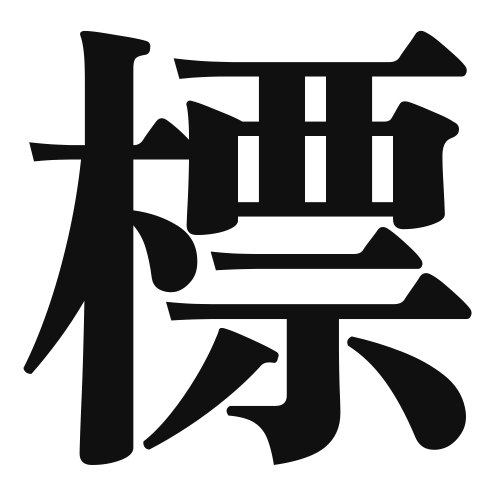1. Overview of Meaning
The kanji “標” (hyou) generally means “mark,” “sign,” or “label.” It is often used to indicate something that serves as a reference point or a guide.
2. Formation and Radical
Formation of the Kanji: The kanji “標” is a compound character (会意文字) that combines elements to convey its meaning. It consists of the radical “木” (tree) and the phonetic component “表” (to surface or show), suggesting the idea of a sign or mark on a tree.
Radical: The radical of “標” is “木,” which relates to trees and wood, emphasizing the idea of something being marked or indicated in nature.
3. Examples of Usage
Common Words and Phrases: Some frequently used words that include “標” are:
- 標識 (ひょうしき, hyoushiki) – signboard or sign
- 標準 (ひょうじゅん, hyoujun) – standard
Example Sentences in Daily Conversation:
- この標識を見てください。 (このひょうしきをみてください。) – Please look at this sign.
- 私たちは標準に従って行動します。 (わたしたちはひょうじゅんにしたがってこうどうします。) – We will act according to the standard.
4. Synonyms and Antonyms
Similar Kanji: A similar kanji is “印” (いん, in), which means “seal” or “mark.” While both kanji relate to marking, “印” often refers to a stamp or impression, whereas “標” emphasizes a sign or indication.
Antonyms: An antonym for “標” could be “消” (しょう, shou), meaning “to erase” or “to disappear,” as it represents the opposite action of marking or indicating something.
5. Cultural and Historical Background
Relation to Japanese Culture: The concept of “標” is significant in Japanese culture, especially in navigation and wayfinding, where signs and markers are essential for guiding people.
Proverbs and Idioms: One common idiom is “標準を超える” (ひょうじゅんをこえる, hyoujun o koeru), meaning “to exceed the standard,” which reflects the importance of standards in various aspects of life, including education and work.
